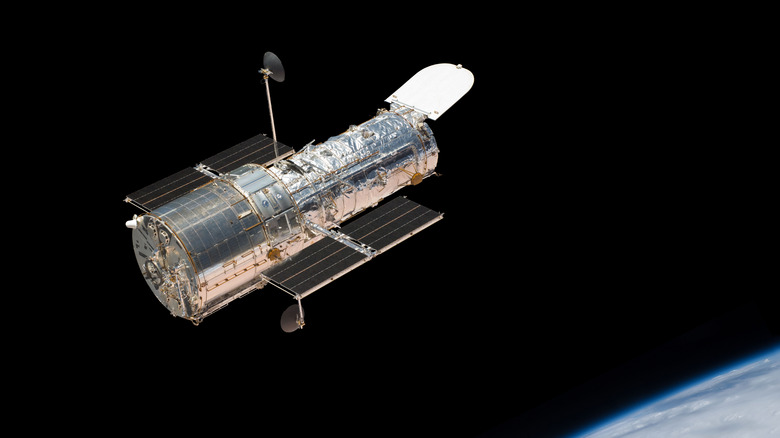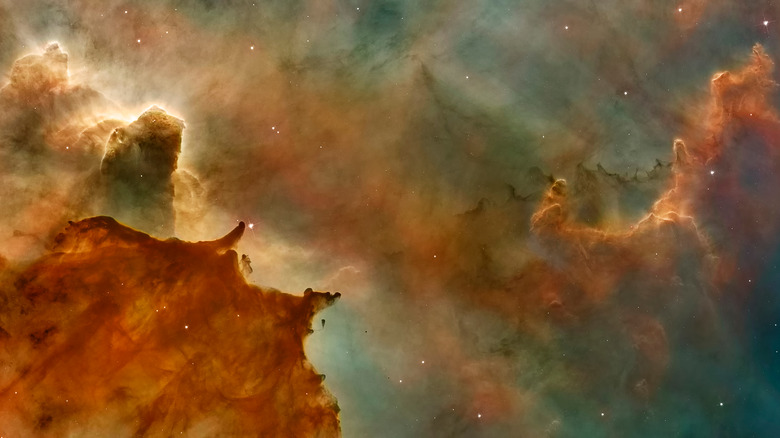Here's How Far The Hubble Telescope Can See
While the telescope as a concept had already been in existence for a short time, Galileo Galilei is credited for inventing the first intended to observe space. His device magnified the lunar surface in unprecedented detail and allowed him to observe the orbits of Jupiter and Saturn's moons. Elsewhere, he used his orbital research to defend the concept of heliocentrism, which was opposed by the Catholic Church as they deemed it to be against scripture. Galileo's work was an enormous step for astronomy, with improvements snowballing over the following centuries as greater magnification was achieved.
In 1990, the Hubble Telescope was launched into space — the largest to ever do so at the time. In 381 years, humanity went from inventing the first telescope to creating one that would become synonymous with space discovery. Per Forbes, the Hubble Telescope's mirrors have reached the limit as to how far they can see, and it is set to be replaced by the larger James Webb Telescope (via NOW). Nevertheless, in the course of its operation, Hubble has enabled countless discoveries and expanded the limits of what we can see.
The Hubble Telescope can see up to 10-15 billion light-years away
According to Cool Cosmos, the Hubble Telescope is capable of detecting celestial structures up to 10-15 billion light-years away from Earth. This incredible capacity has allowed astronomers to observe previously unseen galaxies, the births and deaths of stars, and the gravitational effects of black holes (via NASA). Even early estimations of the universe's age were formulated with Hubble data. Since 2009, its role in finding such distant sights has gradually been taken over by the Kepler and ground-based telescopes. Like Webb, these have larger mirrors that they use to gather more distant light (via Starts With A Bang!).
In spite of its long-range obsolescence, Hubble has remained more than capable of enabling new discoveries about our own solar system. Neptune, for instance, was unknown to science in everything except its existence until Voyager 2 passed it in 1989. And investment in another nine-year journey to observe the gas giant has not been necessary thanks to the Hubble telescope. The observation of extraterrestrial weather patterns, comet collisions, and orbits of Pluto's moons are just some of the other tasks it has performed to help us better understand our neighbors (via HubbleSite).

